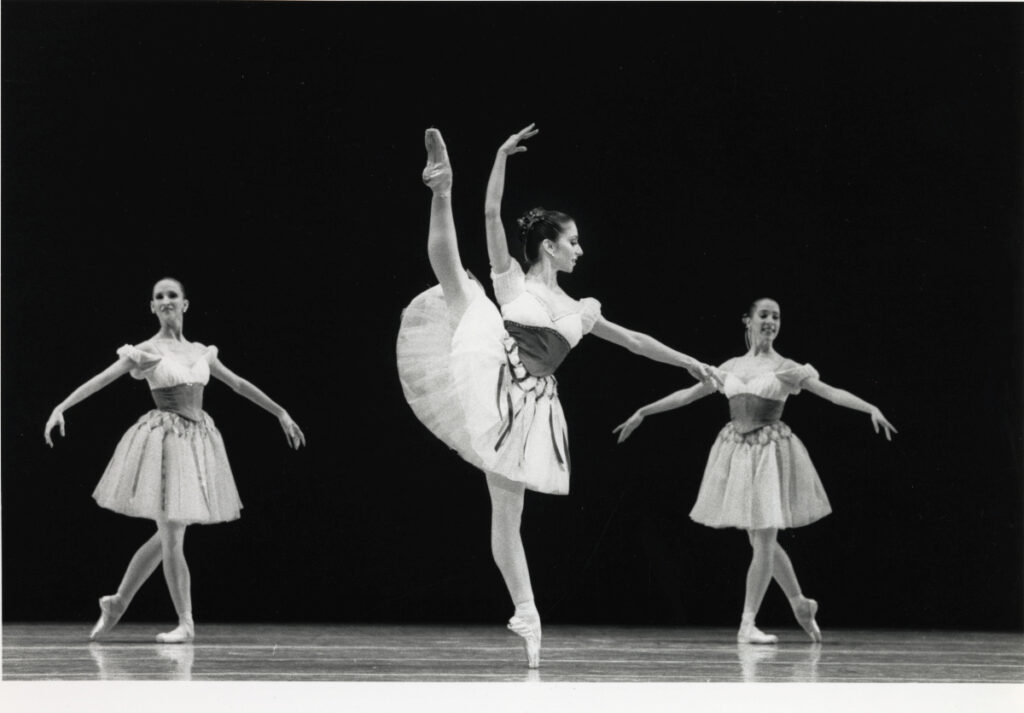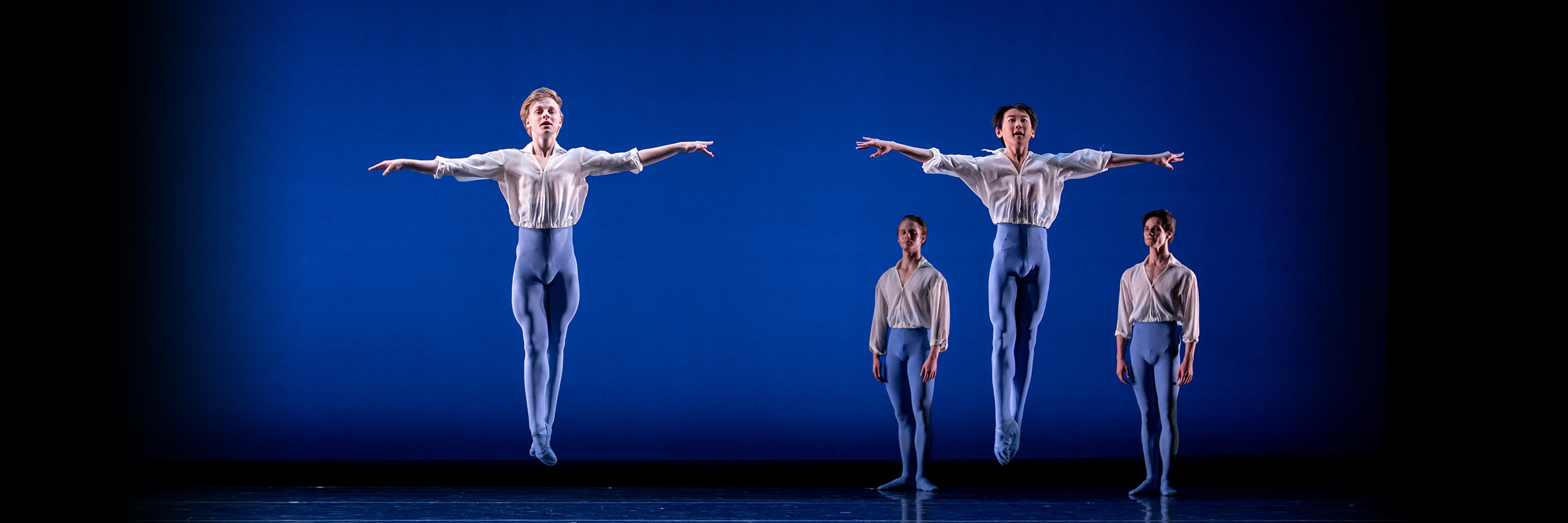In Service to Others, In Service to the Art Form
Artistic Director Peter Boal on Helgi Tomasson
While still a dancer with New York City Ballet, Helgi Tomasson began to choreograph. Encouraged by George Balanchine, he created his first two works for the students of the School of American Ballet (SAB), New York City Ballet’s affiliated school: Giuliani: Variations on a Theme (1982) and Ballet d’Isoline (1983). Ballet d’Isoline was taken into NYC Ballet’s repertory, and Menuetto (1984) was Tomasson’s first work created for New York City Ballet.
Peter Boal was an SAB student when Tomasson choreographed Giuliani: Variations on a Theme, then joined New York City Ballet in time to dance Ballet d’Isoline and Menuetto with the company. He went on to have a long and successful career as a dancer at New York City Ballet before becoming artistic director of Pacific Northwest Ballet. Four decades later, Boal remembers the time he spent in the studio with Tomasson, and generously agreed to share his recollections.

Helgi Tomasson stood at the studio door, motioning for someone to step out of our afternoon pas de deux class. As I blushed and suffered through an ill-fated promenade, I realized Helgi was, in fact, motioning to me. Given my current struggles, following him to the adjacent studio seemed like a preferable option. There, he introduced me to fellow student Marisa Cerveris. We continued to work on partnering while Helgi tried his hand at choreographing for the first time. The work was to premiere in the School of American Ballet’s annual Workshop Performance in June.

Helgi was a regular at SAB, taking classes from Stanley Williams and Andrei Kramarevsky. We often stood next to each other at the barre, and I would emulate my idol as best I could, treasuring discreet corrections and words of encouragement. In 1982, I was about to begin my career as a dancer, while Helgi was enjoying the apex of his. I grew up watching New York City Ballet with my family. While we sat in the second tier, Helgi delighted from the stage with quicksilver speed, precise technique, a winsome smile, and gallant partnering. As he dropped deftly to one knee, flinging his arms to the side on the final note of his variation, I summoned all the power my teenage vocal cords could muster and shouted, “Bravo!”
As previously mentioned, my partnering was rough. Marisa probably could have partnered me better than I partnered her. But each day, with the same quiet guidance I had known in classes, Helgi addressed shortcomings, found strengths, and helped me and the rest of the cast gain confidence. Fellow principal dancer Kay Mazzo worked as his rehearsal assistant, offering words of encouragement to all, including Helgi.

Day by day, over several months, a distinct new ballet emerged. Helgi offered us so much more than steps. We bore witness to his discerning taste—too much here, too little there, overplayed, just right. He selected a classical guitar work composed by Mauro Giuliani. The music was atmospheric and the choreography charming. A new ballet was born, and a great dancer stepped proudly into a new role as prolific choreographer.
Our first guest in the studio was Helgi’s wife, Marlene, whose effusiveness balanced Helgi’s reserve. His young sons came next, looking with wide-eyed adoration at their dad. One offered a hug. Soon, Lincoln Kirstein stopped in to see the new creation. He was back the next day with Rudolf Nureyev. During a final rehearsal in May, Balanchine himself stood beside Helgi at the front of the studio, giving his signature nod of approval. Witnessing Helgi’s pride in the presence of Balanchine was, perhaps, the most rewarding part of the entire process.

The following year, I was lucky enough to be part of Helgi’s second creation, a majestic work called Ballet d’Isoline. My partner was SF Ballet Board Member Catherine Slavonia. We were both in one of Helgi’s first works made for New York City Ballet, Menuetto. We were sorry to see him head across the country to San Francisco.
Spring forward 40 years and audiences can look back at over 50 creations by Helgi. As I’ve watched his ballets over the decades, I see him in each one. Not just the dancer, but the person. Helgi’s offerings to audiences have always been brilliant, but never in a way that leads with ego. He offers taste, clarity, musicality, chivalry. As I watched from the second tier, all those years ago, I could see Helgi presenting Balanchine or Robbins, Patricia McBride or Kay Mazzo, but never himself. He seemed to be in service to others and to the art form. The joy and inspiration he offered audiences through performance has been tremendous. The rewards of his choreography extend far beyond the stage. Behind the scenes, somewhere in a studio, a torch is being passed with a sense of place and purpose. From a former student to an Artistic Director and Principal Choreographer in the apex of a great career, “Bravo, Helgi Tomasson” and thank you.
Header Image: San Francisco Ballet School Students in Tomasson’s Ballet D’Isoline // © Lindsay Thomas



